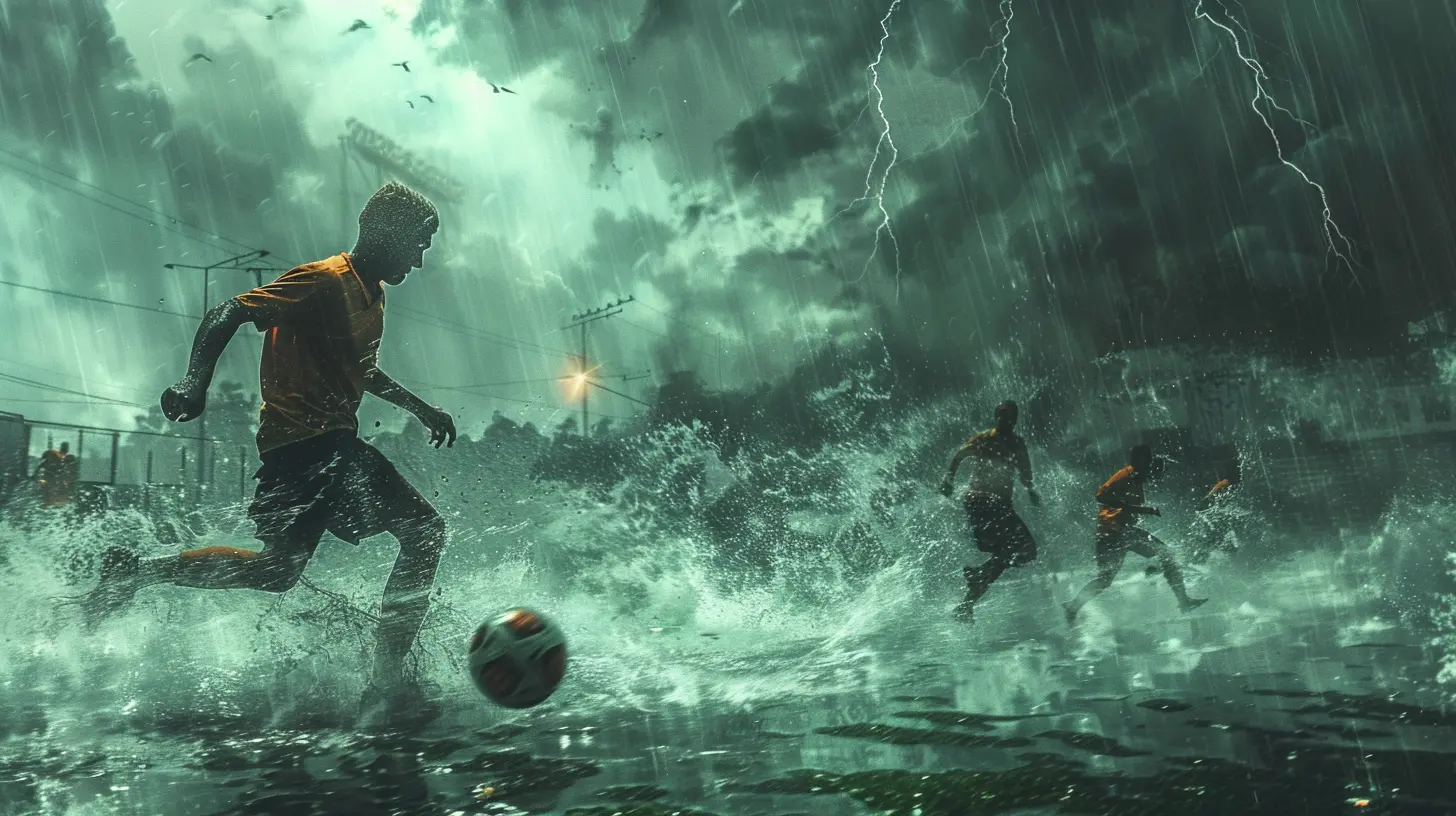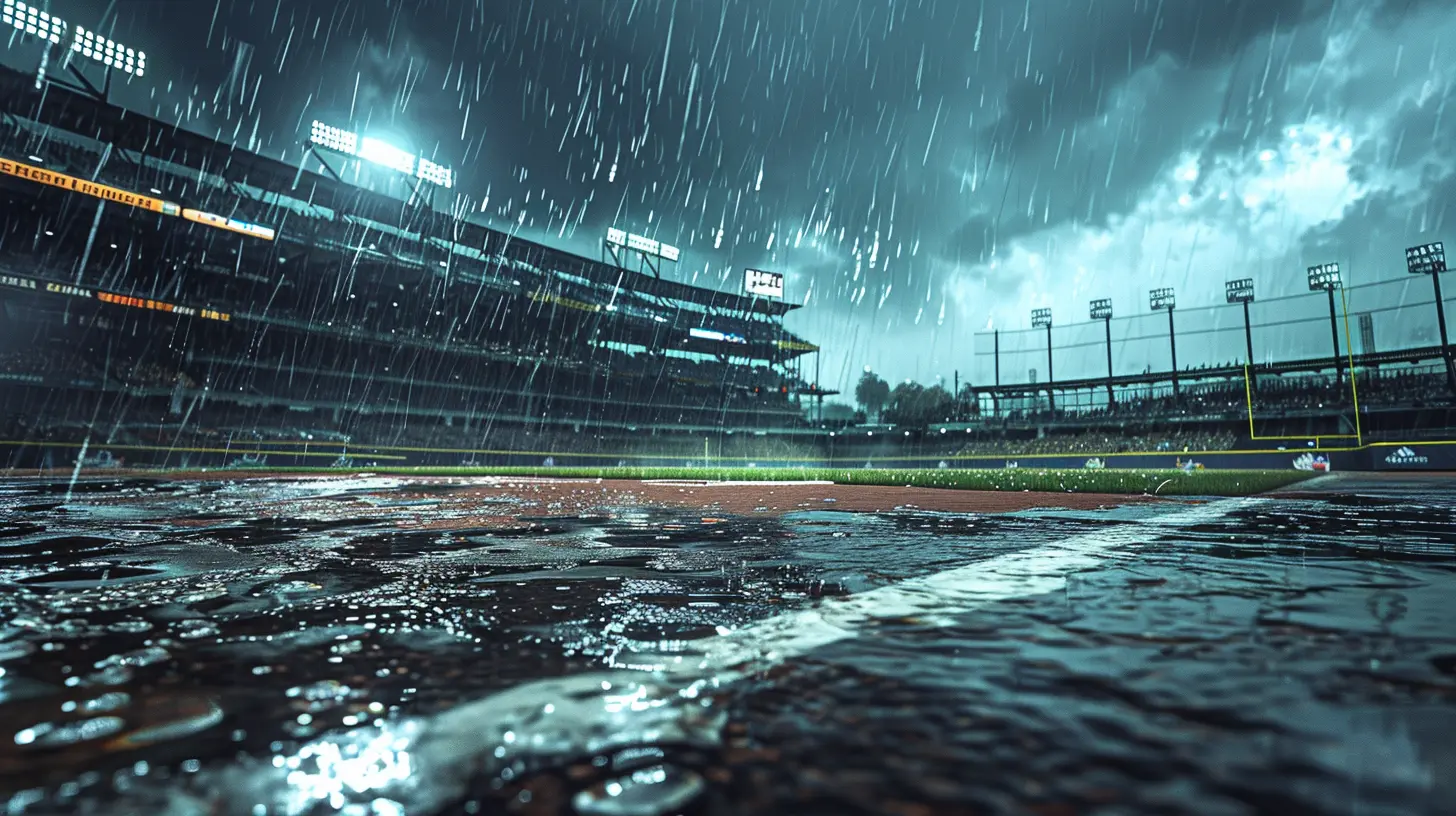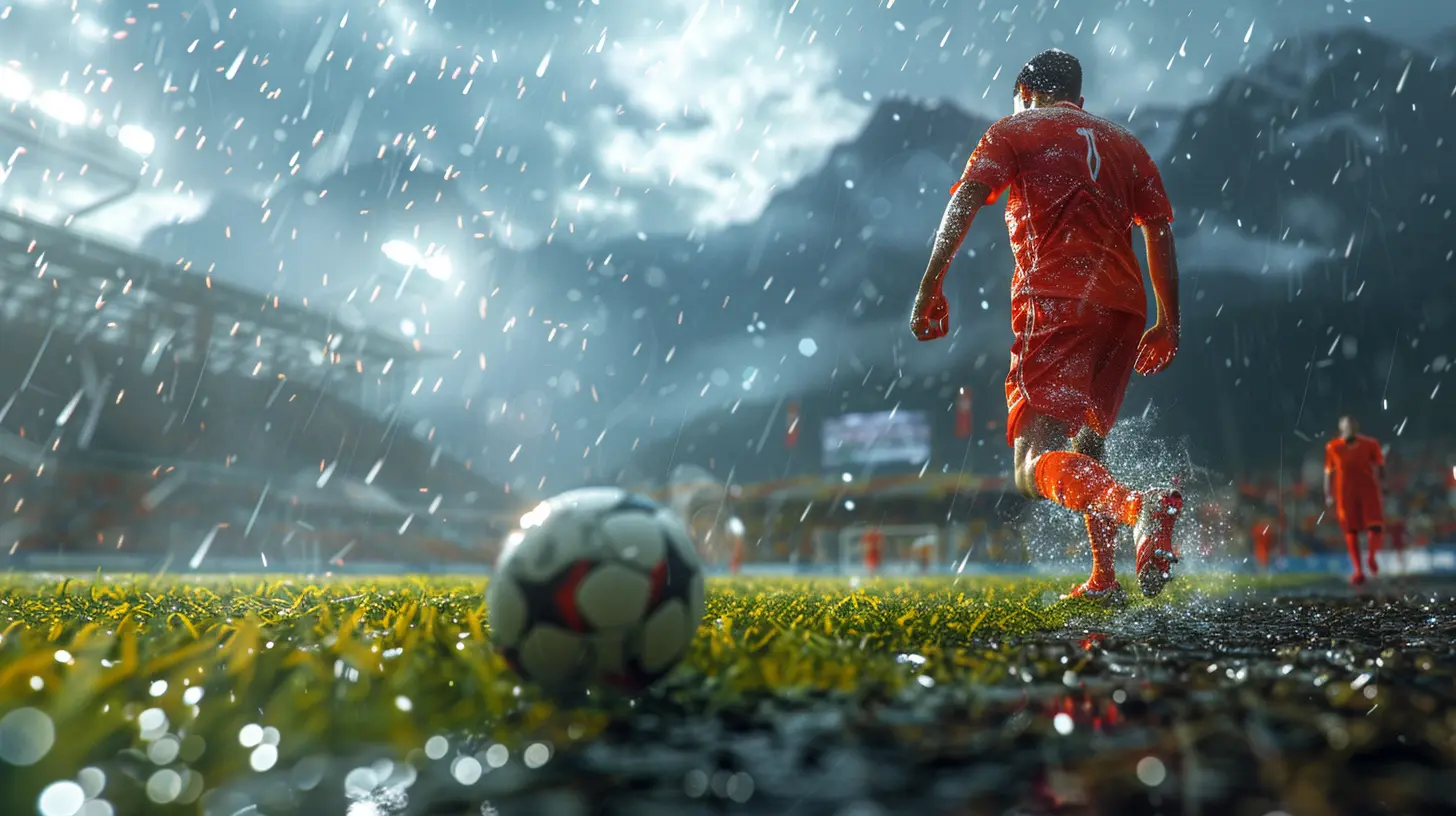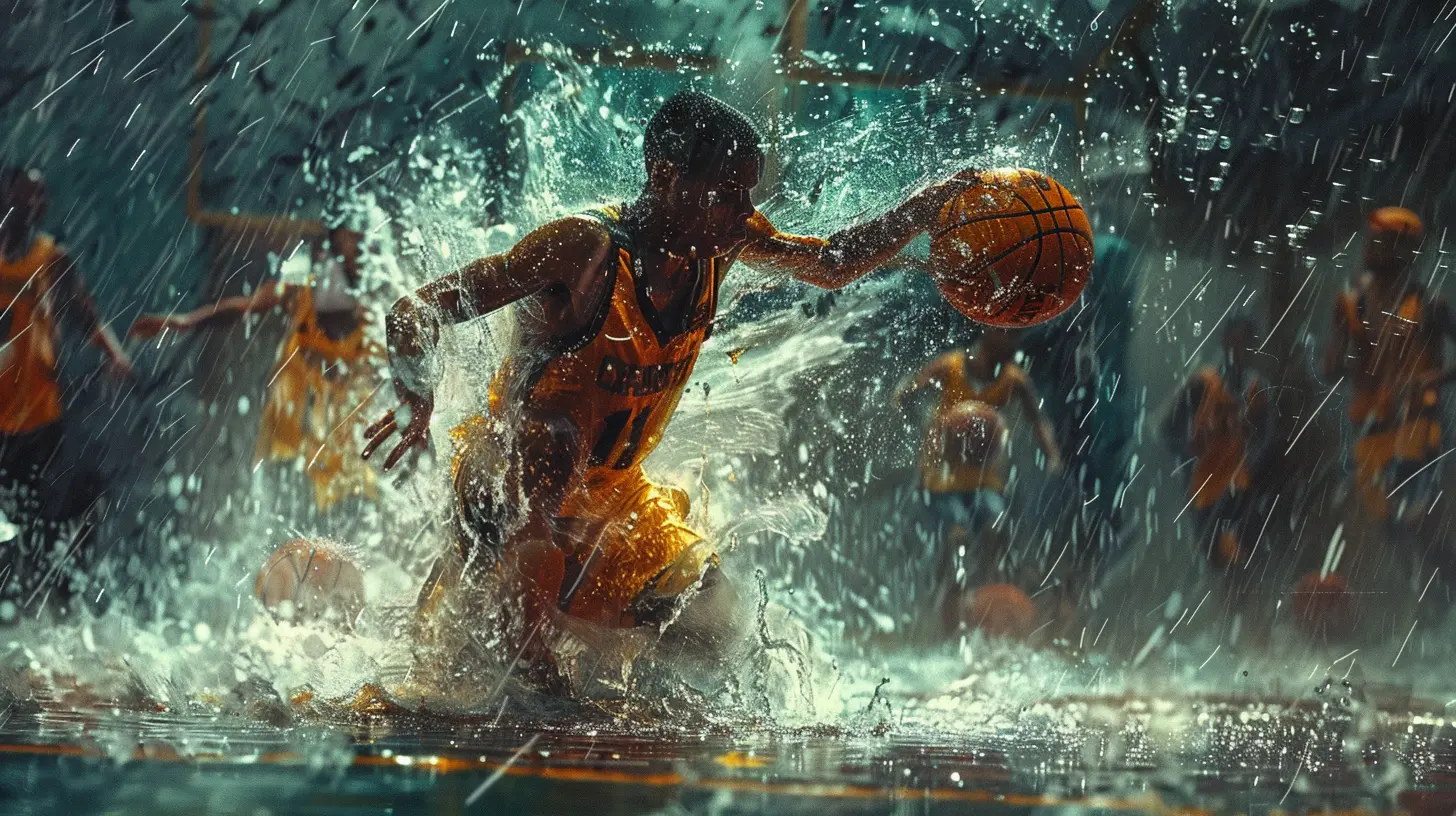Understanding Dynamic Weather Systems in Sports Games
21 May 2025
So, you’ve just booted up your favorite sports game, and you’re ready to dominate the digital turf, court, or what-have-you. Maybe you're seconds away from kicking off or making that first pitch—when BAM! Out of nowhere, it starts raining like you're in a budget rom-com's climactic breakup scene. You look up at the virtual clouds and think, "What fresh nonsense is this?" Well, my friend, welcome to the world of dynamic weather systems in sports games, where Mother Nature herself decides to troll your perfectly laid plans.
Dynamic weather isn't just about graphics or pretty effects—it’s about making your gameplay experience as unpredictable as a cat with access to catnip. But what exactly are dynamic weather systems, how do they mess with your game, and why do developers insist on torturing us with them? Strap in; we’re about to unpack the chaos. 
What Are Dynamic Weather Systems (And Why Should You Care)?
Let’s kick things off with a no-nonsense explanation: dynamic weather systems are in-game mechanics that introduce random or scripted weather changes during gameplay. Think of it as the game’s way of saying, “Oh, you thought you had control? Cute.”Sunny skies aren’t guaranteed when you hit start. Any moment, you could be dealing with torrential rain, blinding snow, or wind so strong it seems like it’s auditioning for a hurricane movie. Game developers implement this feature to add realism and unpredictability to sports games, because hey, why have fun when you can have realism?
But before you start rolling your eyes (too late?), consider this: dynamic weather systems can transform a basic match into a nail-biting struggle for victory. Suddenly, you’re not just playing against your opponent—you’re fighting the elements too. It’s like Fortnite meets Wimbledon, and you didn’t even sign up for it. 
Why Are Developers Obsessed With This Feature?
Let’s face it—game developers are like chefs. They’re constantly trying to toss in the “secret sauce” to keep things spicy. For sports games, dynamic weather’s like adding ghost peppers to your marinara sauce: not everyone asked for it, but here it is, and you're just going to have to deal.The main reasons behind this obsession?
1. Immersion (AKA the Buzzword of the Decade)
Immersion is the Holy Grail of game design. Developers believe that if they throw in a little drizzle or a snowstorm mid-game, you’ll feel like you’re right there on the field, even though you’re actually on your couch eating chips. Is it effective? Sometimes. Is it annoying? Absolutely.2. Replayability
Let’s be honest: without these weather shenanigans, sports games might feel a little repetitive. If every match is played under perfect conditions, you could get bored faster than a cat watching a turtle race. Adding thunderstorms or fog spices up the gameplay, keeping you on your toes and occasionally yelling at your screen.3. Realism
Because apparently, no one can have fun unless it’s “realistic.” Sports don’t happen in a vacuum (unless the future has some seriously weird leagues), so why should your games? Real-life athletes have to deal with the elements, so now you do too! Developers think this makes the game more authentic—because what’s more authentic than losing a championship due to muddy physics?
Types of Weather Systems in Sports Games
Not all weather systems are created equal. Some are plain annoying, some are visually stunning, and a few are straight-up hilarious. Let’s take a look at the usual suspects:1. Rain: The Mood Killer
Rain is the biggest offender in sports games. It’s like the ex who shows up uninvited to every party. It not only drenches the field and messes with visibility, but it also turns gameplay into a slippery, chaotic mess. Good luck keeping possession when your players are sliding around like penguins on an oil spill.Oh, and don’t even get me started on how rain loves to ruin your perfectly planned passes. FIFA players, I see you.
2. Snow: Pretty, But Deadly
Snow is like that one coworker who seems nice but secretly causes havoc. At first, you’re wowed by how beautiful the field looks draped in glistening white. But then it hits you—your players are moving slower than molasses, visibility’s dropping, and your controller is one tantrum away from being hurled across the room.Sure, the game looks all winter-wonderland chic, but at what cost?
3. Wind: The Silent Saboteur
Wind in sports games is sneaky evil. At first, you won’t even notice it’s there. But then your crosses start veering wide, your long-range shots go haywire, and your glorious free kick turns into a public failure. Wind doesn’t look flashy, but it’s like a terrible roommate—it quietly ruins everything you care about.4. Fog: Nature’s Curtain
Fog is the ultimate troll. It’s not just about messing with your gameplay; it’s actively mocking your ability to see what’s happening. Imagine trying to score a goal when you can barely see the ball. Or the goal. Or anything. Thanks, developers. Truly.
The Impact of Weather on Gameplay
Here’s the kicker: dynamic weather doesn’t just affect the visuals. It also messes with the fundamental mechanics of the game, forcing you to adapt faster than a chameleon in a disco.1. Player Movement and Physics
Rain and snow don’t just look pretty—they actively slow down players, making movement clunky and imprecise. It’s like strapping bricks to your cleats and saying, “Have fun!” Meanwhile, wind can alter ball trajectory, so good luck with those aerial passes.2. AI Behavior
Ever notice how the AI seems weirdly competent in bad weather? Coincidence? I think not. The AI adjusts to weather conditions faster than human players, which means you’ve got another layer of aggravation to deal with. It’s like playing chess while someone shakes the board.3. Strategy Changes
Dynamic weather turns strategy into the wild west. That perfect long-ball tactic you’ve been using? Forget it. Now you’re forced to play short passes, adjust your defense, and hope for a miracle. Weather demands adaptability—and by adaptability, I mean swearing at the screen until you figure something out.Notable Examples of Dynamic Weather in Sports Games
Some sports games have truly embraced dynamic weather mechanics, for better or worse. Let’s take a look at a few:1. FIFA Series
FIFA has been experimenting with weather for years, with rain and snow regularly making appearances. While it adds realism, it’s also responsible for some of the most frustrating moments in gaming. Slippery fields? Sudden downpours? Thanks, EA.2. Madden NFL Series
Madden takes things up a notch by incorporating wind, rain, and snow—all of which impact player movement and ball physics. Ever tried kicking a field goal during a blizzard? It’s like threading a needle while blindfolded.3. Rocket League
Okay, Rocket League doesn’t have weather in the traditional sense, but it’s worth a mention. The arena effects (like storms) add a dynamic vibe to matches without actively ruining your gameplay. Take notes, FIFA.Love It or Hate It: Is Dynamic Weather Here to Stay?
Let’s be real—dynamic weather is a love-it-or-hate-it feature. Some players enjoy the added challenge, while others see it as unnecessary frustration. But whether you’re a fan or not, one thing’s clear: it's not going anywhere.Developers love to tout it as a way to make games feel “alive,” and who are we to argue with their artistic vision? (Spoiler: we’re the ones yelling at the screen after slipping on virtual mud.) Plus, as graphics and AI improve, dynamic weather will only get more sophisticated—which is both exciting and terrifying.
Pro Tips for Surviving Dynamic Weather
If you’re sick of Mother Nature wrecking your matches, here are a few tips to keep your sanity intact:1. Adjust Your Strategy
Focus on short, controlled plays instead of risky long shots. Rain and wind laugh in the face of your ambitions.
2. Master the Basics
Practice your ball control and passing under different conditions in training modes. You’ll thank yourself later.
3. Lower Your Expectations
Seriously, just accept the chaos. It’s not always going to go your way, and that’s okay. Probably.
Final Thoughts
Dynamic weather systems in sports games are like the sprinkles on a cupcake. Some people love them, some find them unnecessary, and others want to yeet the whole cupcake across the room. But no matter how you feel, there’s no denying they add an extra layer of unpredictability and challenge to the virtual pitch.So the next time you’re caught in a digital downpour, just remember: it’s all part of the experience (or at least that’s what developers want us to believe). Now, where’s my umbrella?
all images in this post were generated using AI tools
Category:
Sports GamesAuthor:

Leif Coleman
Discussion
rate this article
4 comments
Sera Riley
Dynamic weather in sports games isn’t just eye candy; it’s a game-changer! From slippery pitches to gusty winds, it adds a thrilling layer of realism—perfect for strategy and surprise!
June 10, 2025 at 3:37 PM

Leif Coleman
Thank you! I completely agree—dynamic weather truly enhances gameplay, making strategy more essential and every match unpredictable.
Imani O'Neal
Dynamic weather in sports games enhances realism, challenging players to adapt strategies, reflecting the unpredictability of real-life competition.
June 6, 2025 at 3:10 AM

Leif Coleman
Thank you for your insight! Dynamic weather indeed adds depth and realism, forcing players to think on their feet and adapt their strategies just like in real-life sports.
Bethany Fletcher
Great article! I appreciate how you've broken down the complexities of dynamic weather systems in sports games. It’s fascinating to see how these features can enhance realism and strategy. I’d love to see examples of specific games implementing these systems effectively. Keep it up!
June 1, 2025 at 5:08 AM

Leif Coleman
Thank you for your kind words! I’m glad you found the article insightful. I'll consider adding examples of specific games in future posts. Stay tuned!
Teagan Weber
Dynamic weather in sports games: finally, a way to blame my losses on ‘unexpected rain’ instead of my terrible aim!
May 22, 2025 at 4:55 AM

Leif Coleman
Glad you found a silver lining! Dynamic weather really does add an intriguing twist to gameplay.



